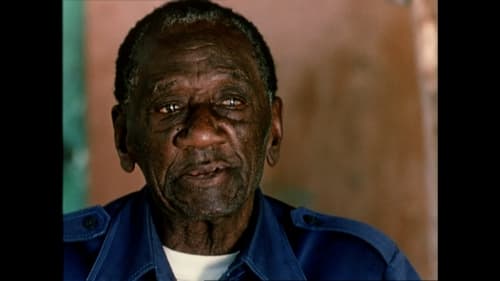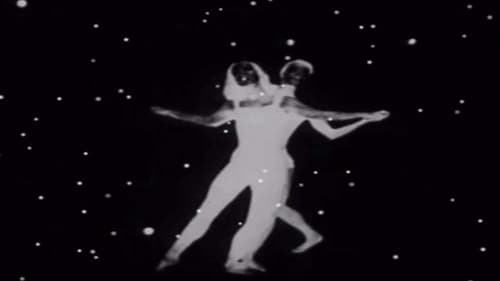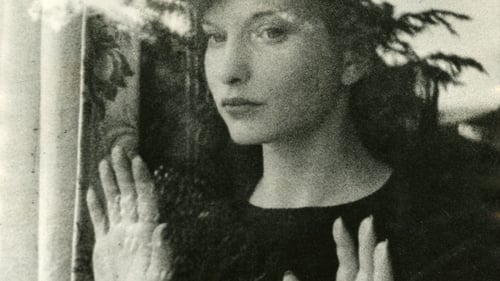Teiji Ito
Nacimiento : 1935-01-22, Tokyo, Japan
Muerte : 1982-08-16
Historia
Teiji Ito was a Japanese composer and performer. He is best known for his scores for the avant-garde films by Maya Deren.

Music
Deborah Stratman brings past perspectives into the contemporary moment in a montage of unfinished film footage from artist Barbara Hammer with evocative sound, texts, and teachings from artist Maya Deren. Vever poetically draws connects between three generations of women filmmakers who separately, and now together, have taken on unknown challenges, and opened themselves up to reinterpretation in their filmmaking practices.

Music
Maya Deren (1917-1961) es quizás la primera directora mujer de cine americana. Lejos de ser una película biográfica, este documental, que cuenta con material original inédito, quiere reflexionar sobre el arte de la direccción cinematográfica a través de los pensamientos y las imágenes que Maya nos dejó.

Music
Maya Deren's Sink, a 30 minute experimental film, is an evocative tribute to the mother of avantgarde American film. The film calls forth the spirit of one who was larger than life as recounted by those who knew her. Teiji Ito's family, Carolee Schneemann and Judith Malvina, float through the homes recalling in tiny bits and pieces words of Deren's architectural and personal interior space. Clips from Maya Deren's films are projected back into the spaces where they were originally filmed appearing on the floorboard, furniture, and in the bowl of her former sink. Fluid light projections of intimate space provide an elusive agency for a filmmaker most of us will never know as film with its imaginary nature evokes a former time and space.

Himself
Cinta documental sobre la vida y la obra de la cineasta de vanguardia Maya Deren, quien desde el feminismo lideró el movimiento del cine independiente en los años cuarenta.

Himself (archive footage)
Maya Deren is a legend of avant-garde cinema. This authoritative biography of the charismatic filmmaker, poet and anthropologist features excerpts from her pioneering Meshes of the Afternoon and her unfinished documentary on Haiti, interviews with Stan Brakhage and Jonas Mekas, and recordings of her lectures. Narrated by actress Helen Mirren, this definitive documentary offers startling insights into one of the most intriguing, accomplished figures in cinema history.

Director
Este íntimo estudio etnográfico sobre las danzas rituales y la posesión del vudú fue filmado por Maya Deren durante su estancia en Haití (1947-1951); nunca editó las tomas, así que el documental fue finalizado por Teiji y Cherel Ito tras la muerte de Deren.

Music
Este íntimo estudio etnográfico sobre las danzas rituales y la posesión del vudú fue filmado por Maya Deren durante su estancia en Haití (1947-1951); nunca editó las tomas, así que el documental fue finalizado por Teiji y Cherel Ito tras la muerte de Deren.

Sound
An expansion upon an idea put forward in Marie Menken's film Notebook; single-frame footage of the moon shot on various nights, blinking and darting around within Menken's field of vision.

Music
In 1963 Boultenhouse wrote, produced, and directed Dionysius,which he described as a “free treatment of Euripides' The Bacchae.”It starred the dancers Louis Falco, Anna Duncan, and Nicolas Magallanes as Dionysius, Agave, and Pentheus respectively, and the experimental filmmakers Charles Levine, Willard Maas, Gregory Markopoulos, Marie Menken, Lloyd Williams and William Wood as the Chorus of Cameras. The film's score was by Teiji Ito.

Music
"This is a new version of the now famous film made for her husband, the poet and film-maker. Returning from the Brussels fair, she shot this at Versailles and the Louvre. There is wit, irony and prophecy here (though perhaps not apparent to those who do not know Marie Menken and Willard Maas personally). She says only 'A more serious film than ARABESQUE, BAGATELLE attempts to synchronize into a lyric statement some observations on Versailles.' Marie Menken's fountains are the fountains of life. Marie Menken's Versailles is the Versailles of death. The beauty of this film is the alternation of the fountains and Versaille death. Only Marie Menken would have the subtlety, sensibility, sesitivity, receptivity to fuse and fetilize the classical paradoxes in such an immediate visual apotheosis." -- Charles Boultenhouse

Music
Filmed at the Alhambra in Spain in just one day, according to Marie Menken. Arabesque for Kenneth Anger concentrates on visual details found in Moorish architecture and in ancient Spanish tile. The date 1961 refers to the addition of Teiji Ito's soundtrack and its subsequent completion, but the film was likely shot in 1960 or earlier. - David Lewis

Music
A combination of animated line drawings with live photography of a nude model. A play on the title (living lines, life model, procreation and hand life line).

Music
Menken's 16mm, stop-motion tribute to the art of Dwight Ripley was filmed in 1959 in his apartment at 416 East Fifty-eighth Street in New York. She used his drawings as flats.The remarkably contemporary soundtrack for steel drum, guitar, flute, and voice was written for the occasion by Maya Deren's young husband, Teiji Ito, and is available in his album Music for Maya (Tzadik). Stan Brakhage called Dwightiana a pioneer example of the film portrait, abstract rather than narrative (the colored pencils represent Ripley's palette). Ripley was also a botanist, and Menken's unusual title alludes to botanical nomenclature as if Dwightiana might be the name of a species as well as a work "about" Dwight.

Music
Because of the film's choices of text and illustration were made so well – and because the natural anatomy of memory is so like that of cinema montage– the movie's effectiveness is very great, and it stands as a worthy initial exploration of the medium in which Mr. Boultenhouse has wrought so well. –Wallce Thurston, Kulchur #16

Music
En The Very Eye of Night, Maya Deren se vuelve a apoyar en la danza, donde volátiles siluetas de bailarines al estilo de los dioses griegos danzan sobre un fondo de estrellas, como si estuvieran libres de toda gravedad.

Music
Un joven oriental con un pañuelo y el torso desnudo, se ejercita delante de una serie de paredes sin adornos, primero sin espada y luego con ella. En "Meditation on Violence" la cámara de Deren está motivada por el movimiento de dicho hombre, llamado Chao Li Chi.

Original Music Composer
Una mujer (interpretada por la propia Maya Deren) explora sus propias imágenes interiores, a través de un sueño, donde los objetos ordinarios de su vida diaria consiguen un misterio sobrecogedor. Deren (1917-1961) explicó que quería "plasmar en la película la sensación que experimenta un ser humano sobre un incidente, más que grabar el incidente con precisión". Codirigido con su marido, el director de fotografía Alexander Hammid, "Meshes of the Afternoon", a través de sus múltiples lecturas y reinterpretaciones, pronto se erigió como uno de los films experimentales más importantes de todos los tiempos, y convirtió a Maya Deren en la voz preeminente del "avant-garde cinema" de los Estados Unidos en los años 40 y 50, influyendo en directores como Jean Cocteau, Luis Buñuel o David Lynch. El film lo adquirió el MoMA -The Museum of Modern Art- de Nueva York.
















